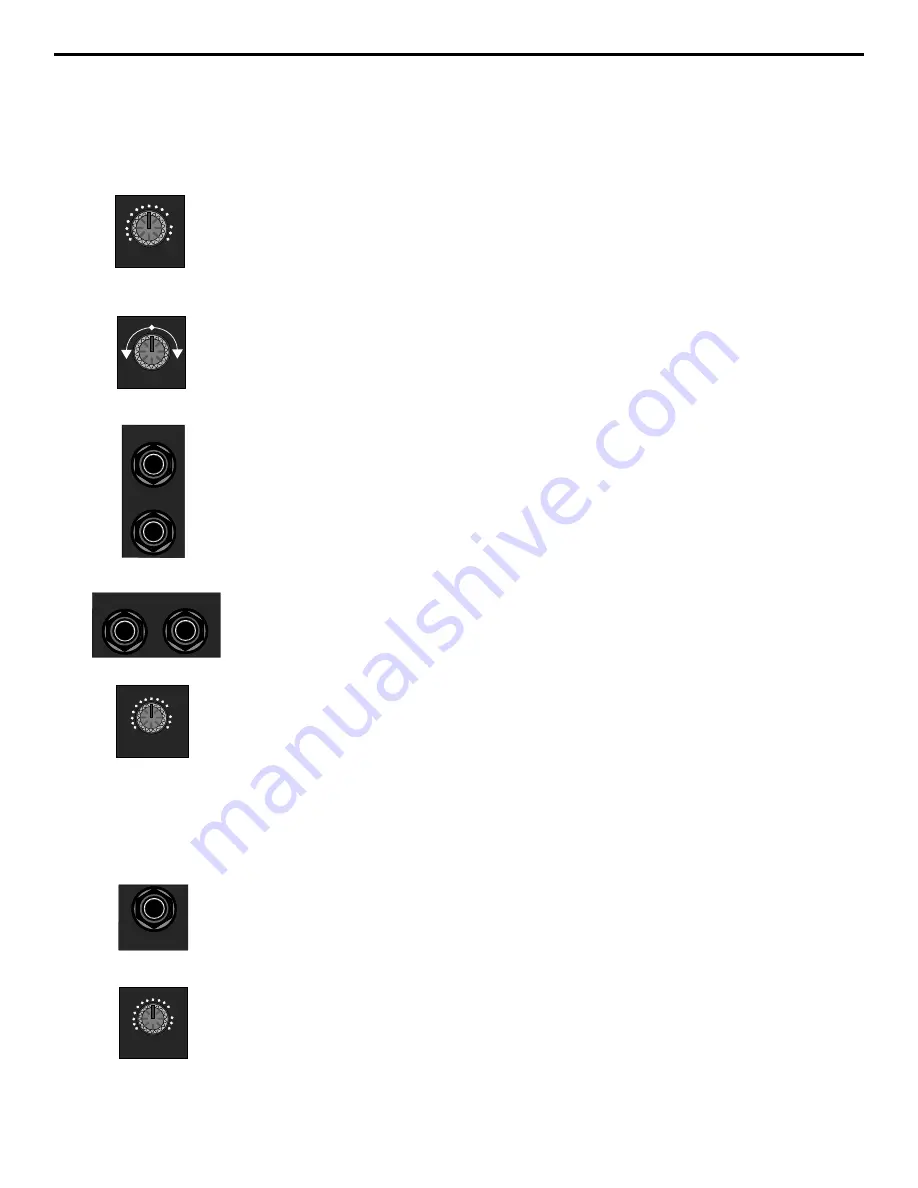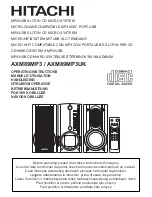
19
Using The Aux Sends and Returns and Monitor Output
The two Aux sends provided by the SD8 allow you to combine the signal from
multiple channels and send the resulting mix to the rear panel Monitor output
jack, to the internal Zoom Digital Signal Processor (DSP), or to external devices
such as effects processors.
The Aux 1 / Monitor send knob works as follows: when it is at the “0” position,
the signal is routed with unity gain (that is, no boost or attenuation). As it is
turned clockwise from the “0” position, the signal is boosted; as it is turned
counterclockwise from the “0” position, it is attenuated. Aux send 1 is
pre-fade; that is, the level of the signal is determined solely by the input trim and
is unaffected by the EQ settings or the position of the channel level control.
The DSP/ Aux 2 send knob works differently: At the 12 o’clock position, there is
no signal routed. As it is turned clockwise (towards “Aux 2”), signal is routed
increasingly to Aux Send 2. As it is turned counterclockwise (towards “DSP”),
signal is routed increasingly to the internal Zoom Digital Signal Processor.
In contrast to Aux send 1, this Aux send is post-fade; that is, the level of the
signal is determined by the input trim, the EQ settings, and the position of the
channel level control (raising or lowering the level of the channel will affect the
send level as well). It is particularly important to keep this distinction in mind
when you connect external signal processors to the SD8 via either or both of
the two Aux Send jacks on the rear panel.
In addition, the SD8 provides two Aux returns, controlled by a single knob in the
Main section. These returns allow you to bring in signal from outboard devices,
either as a stereo pair or dual monophonically (many popular effects processors
provide a single mono input but a stereo output). Because the SD8 is a stereo
device, Aux return 1 is automatically panned hard left and Aux return 2 is
automatically panned hard right. This signal is at unity gain (no boost or
attenuation) when the Aux return knob set to the “0” position. Turning the knob
clockwise from the “0” position (towards the “10” position) causes the Aux return
signal to be boosted by as much as 10 dB. Turning it counterclockwise from “0”
(towards the “
∞
” position) causes the return signal to be attenuated (when fully
counterclockwise, the signal is attenuated infinitely—in other words, there is no
return signal).
Using the Monitor Output
In live performance, it is usually desirable to have onstage monitor speakers that
allow the performer to clearly hear the music being played. Often, however, the
performer requires a different mix than that being sent to the house speakers.
The SD8 Monitor output accommodates this need. A separate output jack on
the rear panel allows an independent Monitor mix (sometimes called a submix)
to be routed to an external amplifier/speaker system. The blend of sounds sent
to the Monitor mix is controlled by the Aux 1 / Monitor send knob for each
channel, with the master Monitor mix volume controlled by the main section
Monitor Level knob. Because this aux send is pre-fade, the Monitor mix is
completely independent of the Main Level control setting, the 10-band graphic
master EQ setting, the individual channel levels, and the individual channel EQ
settings.
AUX SEND 1
(+4dBu <75
Ω
)
AUX SEND 2
(+4dBu <75
Ω
)
+10
O
∞
AUX1/MON
AUX RETURN
1 (+4dBu 10K
Ω
) 2
RETURN 1-2
+10
O
∞
Aux Send 1 / Monitor knob
Aux Send jacks
Aux Return jacks
Aux Return knob
MON OUT
(+4dBu <75
Ω
)
MONITOR
+10
O
∞
Monitor output jack
Monitor Level knob
DSP AUX2
DSP / Aux Send 2 knob





































